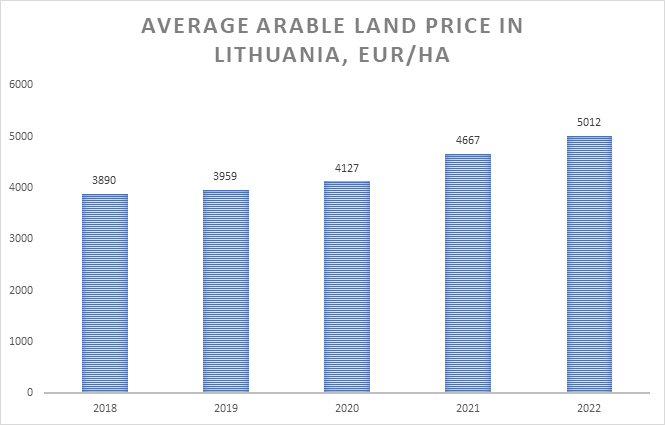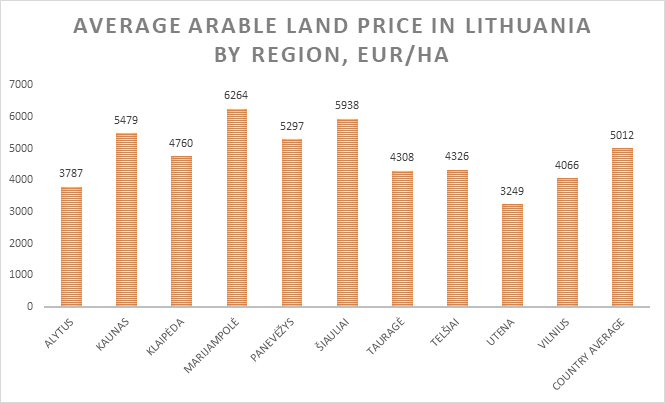Analysis, 2018 - 2022:
Agricultural land prices in Lithuania
Also see: Analysis, 2011 - 2018: Agricultural land prices in Lithuania
Lithuania's Arable Land: Purchase and Lease Dynamics
In recent years, Lithuania's agricultural sector has demonstrated noteworthy expansion, leading to a consistent rise in both land purchase and lease prices. This upswing not only underscores the dynamism of the sector but also indicates its promising potential for sustained growth and long-term sustainability.

The first graph illustrates the average price of arable land for acquisition in Lithuania across a five-year timeframe. Commencing at 3,890 Euro per ha in 2018, a modest uptick occurred in 2019, paving the way for more pronounced leaps in the ensuing years. By 2022, the cost had surged to 5,012 Euro per ha, signifying a substantial growth of nearly 30% throughout the period.
Delving further into regional data, discernible disparities in land prices emerge across various Lithuanian regions. The primary factor contributing to these variations is the quality of the soil.

In tandem with the upward trend in land purchase prices, lease rates for arable land have also followed a similar trajectory. Illustrated in the second graph, the cost per hectare commenced at 131 Euro in 2018, soaring to 241 Euro by 2022. This noteworthy escalation underscores the increasing demand and inherent value associated with Lithuanian arable land.

Several factors could be attributed to this rise:
- Enhanced agricultural practices and technologies: modernization and adoption of new technologies have amplified yields and improved the overall quality of produce, making the land more valuable.
- Despite arable land price growth in the last years, there is still huge difference comparing with the other EU member states.
- Limited amount of arable land available and a growing interest in farming, competition for prime agricultural land has intensified, driving up prices.
- Increased interest from foreign investors in the Lithuanian agricultural sector has spurred demand. These investors see potential in the nation's farming capabilities and are keen to tap into the European market.
- Lithuania has demonstrated resilience to changing climate patterns, making it particularly attractive for long-term agricultural investment.
In conclusion, the data presented paints an optimistic picture of Lithuania's agricultural future. As the nation continues to adopt advanced agricultural practices and caters to increasing demand, the value of its arable land is expected to keep rising. Investors, farmers, and policymakers should take note of these trends and strategize accordingly to harness the sector's full potential.
